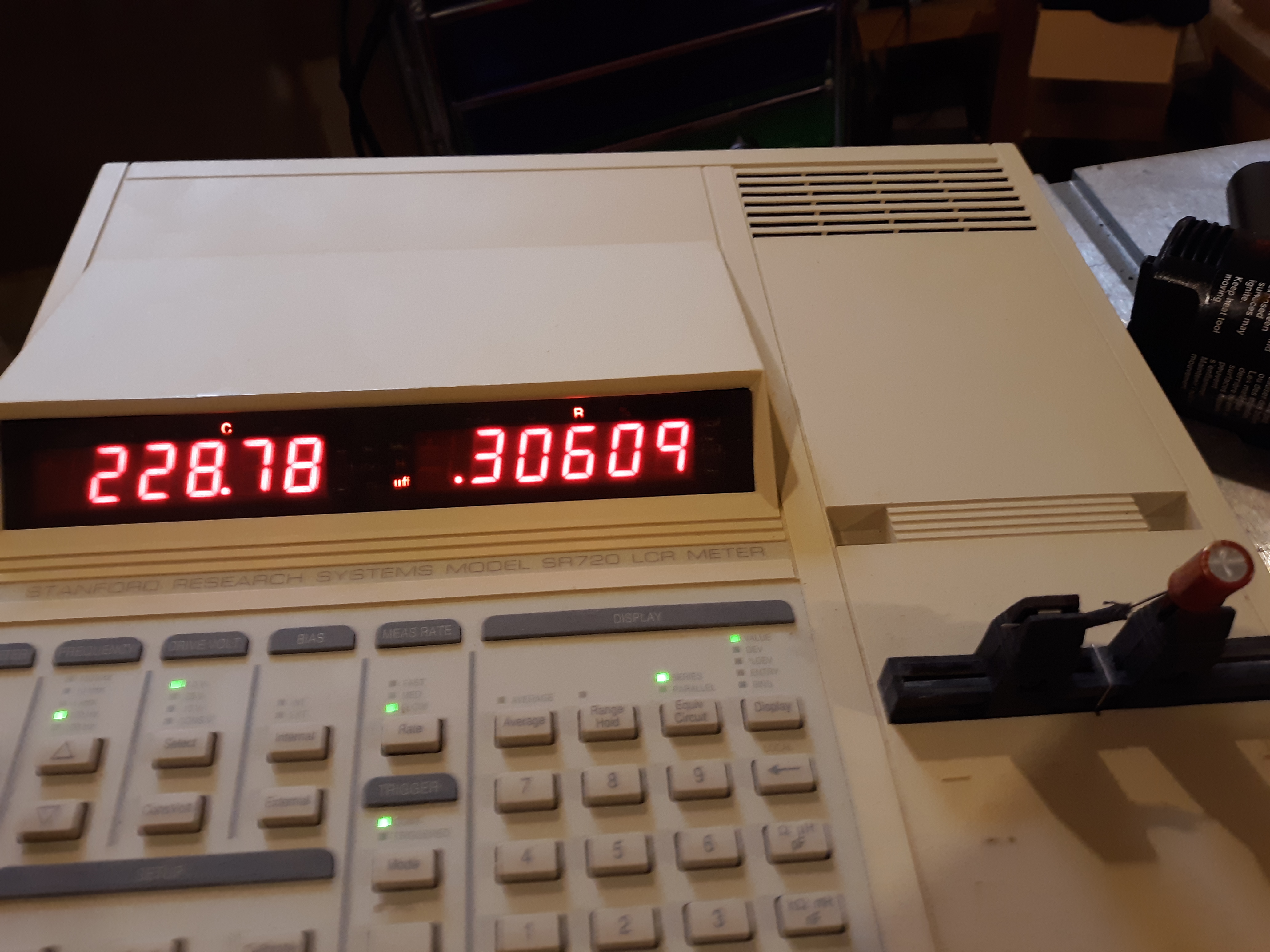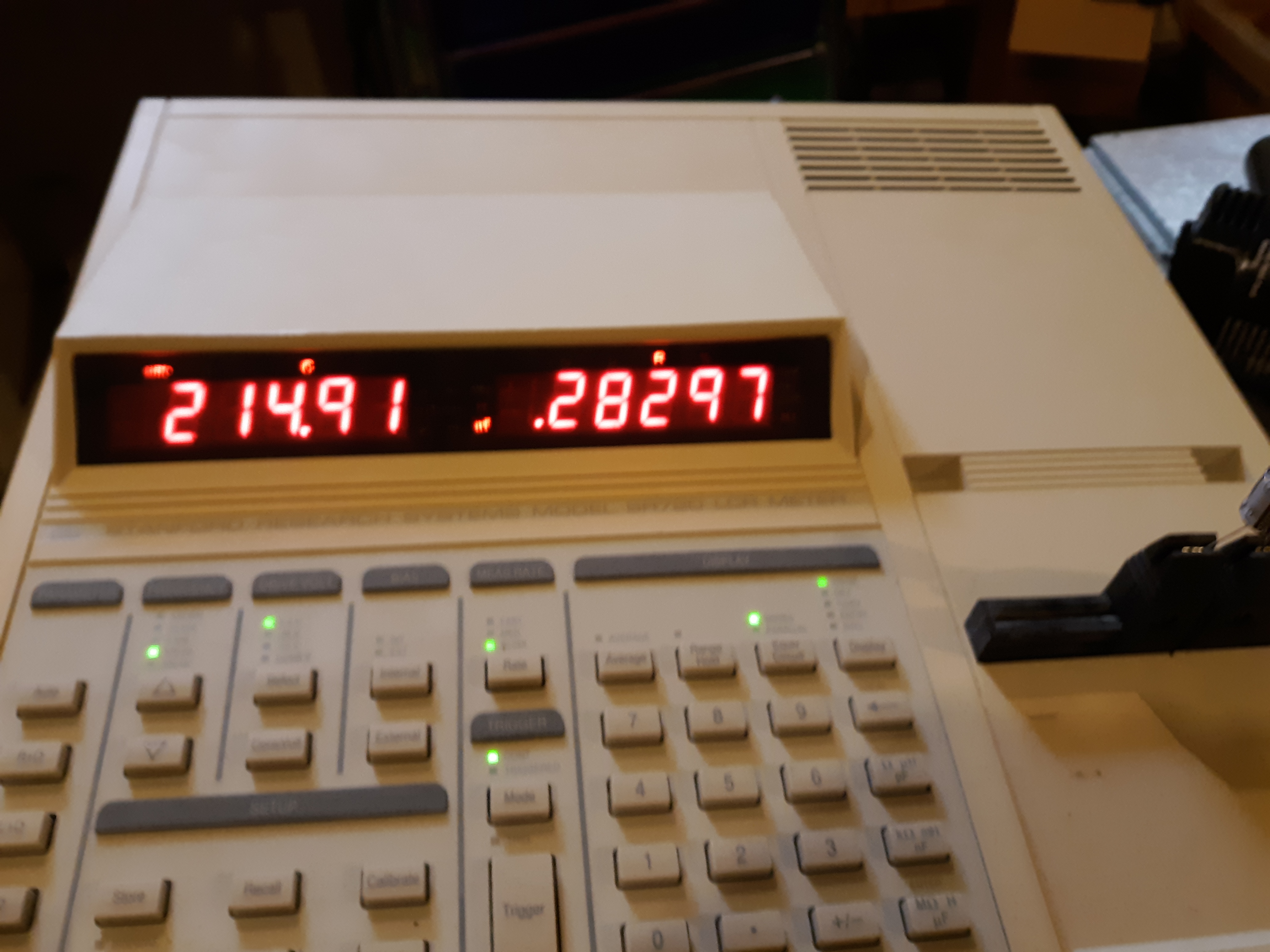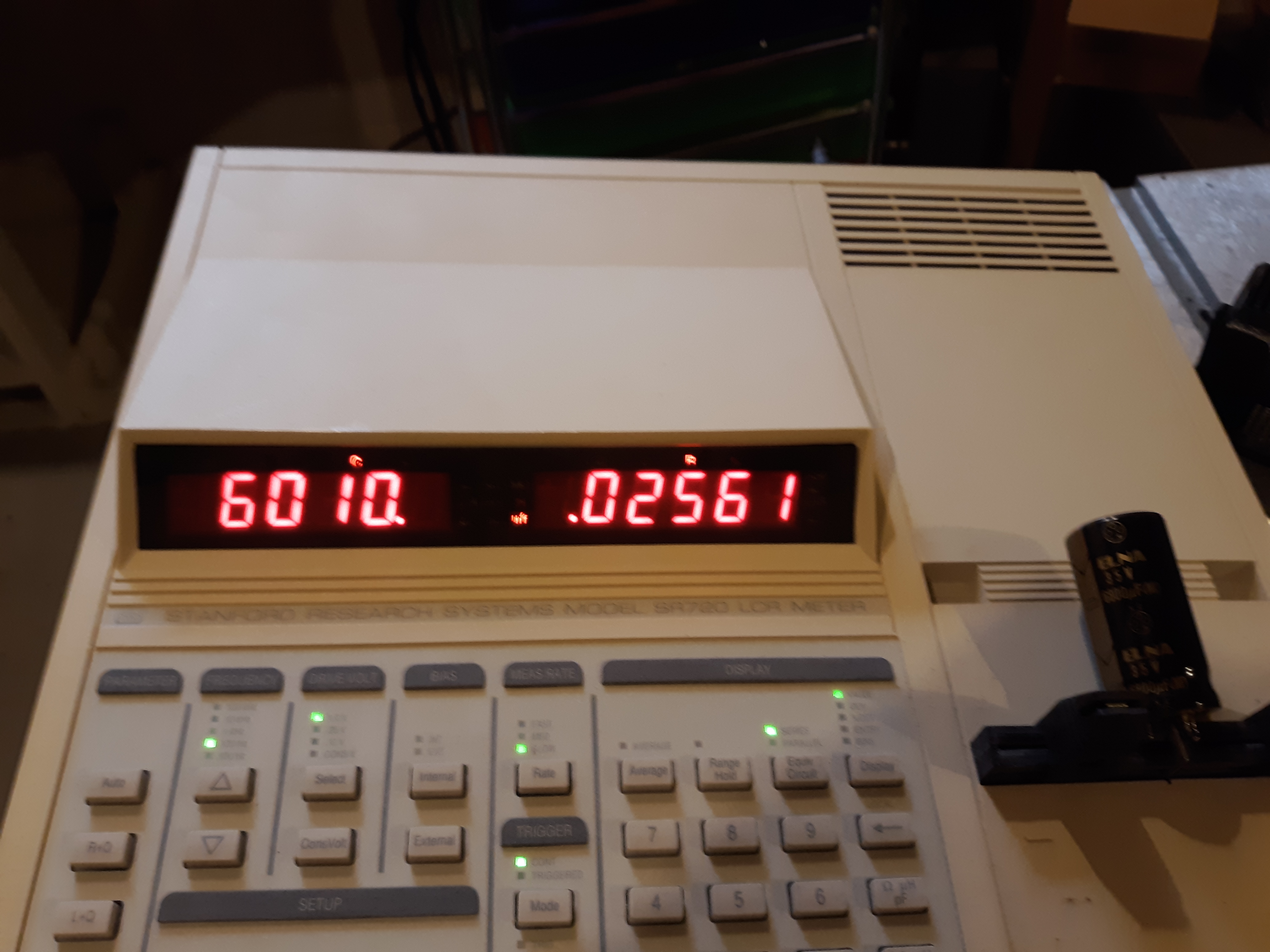05-15-2020, 04:00 PM
We had a little discussion on AK about the electrolytics and their degradation over time.
I always suspected that todays ele trolytics, meaning good quality ones from reputable manufacturers, are much better at keeping their parameters over time, especially if not subjected to operating under conditions close to max ratings.
When I first extracted a few caps from this Philips I saw absolutely none of the capacitance decrease.
This told me I will not likely see other parameters deterioration, like the ESR, either.
I even found an article where a scientist, R. Shukla, experiments with accelerated ageing; it seems from it that the ESR and capacitance corelate very accurately when age, so one of my conclusion is: with modern caps not subjected to harsh conditions, no capacitance decrease - no ESR increase.
So, when a forum member asked me if I did check the ESR I first thought of making a circuit, but then, having an advanced LCR meter , Stanford Research 750, I decided to look through the manual, and, sure enough!!! - it has C+R mode where it just shows both C and ESR.
So, having set the recommended 120Hz frequency, I put 4 caps to the test.
The First pair is
1. Cerafine 220uF 25V, year 1987, original from this CD880
2. A brand new Nichicon low impedance cap 220uF 25V, UPJ1E221MPD6TD I bought to replace it.
The Cerafine 220uF ESR is measured at 0.306 Ohm.
I compared it with a Nichicon 220uF 35V low impedance cap. The ESRs are respectively 0.306 and 0.282 ohms, that is, they are the same, which to me neand "No Degradation".


Then the second pair,
3. 6,800 uF 35V from this CD
4. A brand new 10,000uF 35V I just bought to replace the previous cap
Now, you could see how the capacitance measured is lower than declared in the large caps, both old and new. Still within the declared tolerance. The Fluke meter shows higher value and the value also seems dependent on the frequency. It went up as the frequency went up.
So, the ESR of the old capacitor of 6800uF, is even lower than the new one, a Nichcon with 3600mA ripple.


So. The caps are in essence have no degrading whatsoever.
My decision right now is: despite having bought all the caps - no recapping for now.
Will keep it original.
I always suspected that todays ele trolytics, meaning good quality ones from reputable manufacturers, are much better at keeping their parameters over time, especially if not subjected to operating under conditions close to max ratings.
When I first extracted a few caps from this Philips I saw absolutely none of the capacitance decrease.
This told me I will not likely see other parameters deterioration, like the ESR, either.
I even found an article where a scientist, R. Shukla, experiments with accelerated ageing; it seems from it that the ESR and capacitance corelate very accurately when age, so one of my conclusion is: with modern caps not subjected to harsh conditions, no capacitance decrease - no ESR increase.
So, when a forum member asked me if I did check the ESR I first thought of making a circuit, but then, having an advanced LCR meter , Stanford Research 750, I decided to look through the manual, and, sure enough!!! - it has C+R mode where it just shows both C and ESR.
So, having set the recommended 120Hz frequency, I put 4 caps to the test.
The First pair is
1. Cerafine 220uF 25V, year 1987, original from this CD880
2. A brand new Nichicon low impedance cap 220uF 25V, UPJ1E221MPD6TD I bought to replace it.
The Cerafine 220uF ESR is measured at 0.306 Ohm.
I compared it with a Nichicon 220uF 35V low impedance cap. The ESRs are respectively 0.306 and 0.282 ohms, that is, they are the same, which to me neand "No Degradation".
Then the second pair,
3. 6,800 uF 35V from this CD
4. A brand new 10,000uF 35V I just bought to replace the previous cap
Now, you could see how the capacitance measured is lower than declared in the large caps, both old and new. Still within the declared tolerance. The Fluke meter shows higher value and the value also seems dependent on the frequency. It went up as the frequency went up.
So, the ESR of the old capacitor of 6800uF, is even lower than the new one, a Nichcon with 3600mA ripple.
So. The caps are in essence have no degrading whatsoever.
My decision right now is: despite having bought all the caps - no recapping for now.
Will keep it original.
People who do not drink, do not smoke, do not eat red meat will one day feel really stupid lying there and dying from nothing.



![[-] [-]](https://philcoradio.com/phorum/images/bootbb/collapse.png)


